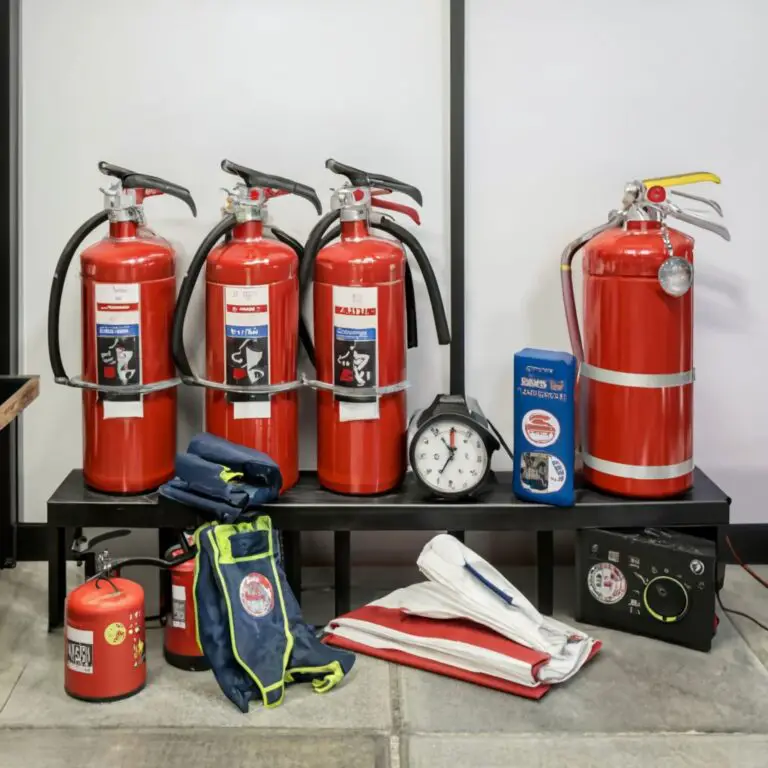When it comes to safeguarding lives and property, fire safety equipment plays a critical role. Whether in a residential setting or a commercial facility, having the right fire safety equipment can make all the difference during an emergency. This article provides a comprehensive overview of fire safety equipment, covering essential tools, their functions, and best practices for effective fire prevention and response.
Understanding Fire Safety Equipment
Fire safety equipment encompasses various devices designed to detect, contain, or extinguish fires and enable safe evacuation. Below, we delve into the most common and effective tools that every home and business should consider.
Importance of Fire Safety Equipment
The presence of fire safety equipment can save lives, minimize property damage, and aid first responders during emergencies. Understanding the role of each device is crucial to ensuring that you’re prepared to handle potential fire hazards effectively.
Types of Fire Safety Equipment
Different types of fire safety equipment serve unique purposes, from early detection to actual fire suppression. Here’s an in-depth look at some of the essential tools:
Fire Alarms and Smoke Detectors
Smoke detectors and fire alarms are among the first lines of defense in fire safety. These devices alert occupants when smoke or fire is detected, allowing for quick evacuation and minimizing potential harm.
Types of Smoke Detectors
- Ionization Smoke Detectors: Detect small smoke particles, ideal for flaming fires.
- Photoelectric Smoke Detectors: Effective for smoldering fires with larger smoke particles.
Maintenance Tips
Regularly test and replace batteries in smoke detectors to ensure optimal performance.
Fire Extinguishers
Fire extinguishers are vital for controlling small fires before they spread. Choosing the correct type of fire extinguisher based on the potential fire hazards in your environment is essential.
Types of Fire Extinguishers
- Class A: For ordinary combustibles like wood, paper, and fabric.
- Class B: Suitable for flammable liquids, such as oil and gasoline.
- Class C: Designed for electrical fires.
- Class K: Best for kitchen fires, particularly those involving cooking oils.
How to Use a Fire Extinguisher
Using the PASS method (Pull, Aim, Squeeze, and Sweep) is the standard approach for handling a fire extinguisher effectively.
Fire Blankets
Fire blankets are versatile tools ideal for small fires or covering someone whose clothing has caught fire. They work by cutting off the oxygen supply to the flames.
Common Uses of Fire Blankets
- Containing kitchen fires
- Assisting with clothing fires
- Safe for use on various fire types, including electrical fires
Fire Sprinkler Systems
Sprinkler systems are an automatic fire suppression solution commonly found in commercial and industrial buildings. These systems activate when high temperatures are detected, releasing water to control and extinguish flames.
Types of Fire Sprinkler Systems
- Wet Pipe Sprinklers: Filled with water, ideal for areas that are not prone to freezing.
- Dry Pipe Sprinklers: Contain pressurized air and are suitable for colder environments.
- Pre-Action Sprinklers: Require multiple triggers before releasing water, reducing accidental activation.
Fire Safety Equipment Maintenance and Testing
Regular maintenance of fire safety equipment is essential for ensuring they operate effectively when needed.
Testing Smoke Alarms
Test smoke alarms monthly and replace batteries at least once a year. Some smoke detectors have a test button to check their functionality.
Checking Fire Extinguishers
Inspect fire extinguishers annually and have them professionally serviced every few years. Ensure that they are accessible and clearly labeled.
Fire Drills and Training
Routine fire drills and training sessions help ensure everyone knows how to use fire safety equipment and evacuate the premises safely.
Legal Requirements and Regulations for Fire Safety Equipment
Many jurisdictions require specific fire safety equipment to be installed in buildings to meet fire codes and regulations. Understanding and complying with these regulations can help avoid penalties and, more importantly, save lives.
Commercial Fire Safety Codes
Businesses often need to adhere to strict fire safety standards, including installing fire alarms, extinguishers, and sprinkler systems.
Residential Fire Safety Guidelines
Most fire departments provide guidelines for homeowners, emphasizing the importance of smoke alarms, fire extinguishers, and evacuation plans.
Choosing the Right Fire Safety Equipment
Selecting the appropriate fire safety equipment depends on various factors, including the environment and potential fire risks.
Evaluating Fire Risks
Consider the materials and activities in your space to determine the types of fires you may encounter and the suitable equipment for each.
Consulting with Fire Safety Experts
Fire safety experts can provide valuable insights into what equipment is necessary for specific settings, ensuring comprehensive coverage.
FAQ: Fire Safety Equipment
What is the most important piece of fire safety equipment?
While all fire safety equipment is essential, smoke detectors are considered one of the most crucial tools as they provide early warnings, which can prevent injuries and fatalities.
How often should fire safety equipment be checked?
Smoke detectors should be tested monthly, fire extinguishers inspected yearly, and sprinkler systems serviced annually.
Can I use a fire extinguisher on any type of fire?
No, it’s vital to use the correct fire extinguisher type. For example, water-based extinguishers should not be used on electrical or oil fires.
What should I do if a fire extinguisher is expired?
Expired fire extinguishers should be professionally recharged or replaced. Expired extinguishers may not function properly during an emergency.
Are fire sprinklers necessary in homes?
While not mandatory in all residences, fire sprinklers significantly enhance safety in larger homes or those with high fire risks.
Do I need a fire blanket if I have a fire extinguisher?
Yes, fire blankets are beneficial for quickly smothering small fires and are a valuable addition to extinguishers, particularly in kitchens.

